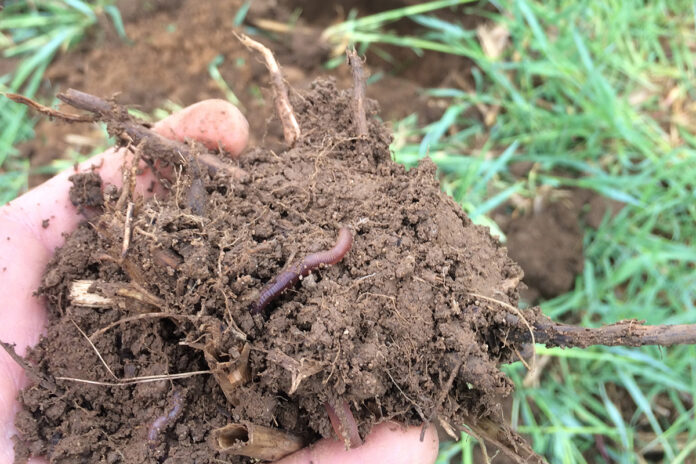
A few days ago, I was filling out my schedule for this month so that I know where I am supposed to be on what day and at what time. My wife and coworkers seemed to find this information useful as well. While making entries for next week I realize that I have two different health checkups and a follow-up doctor visit scheduled. Because I believe good health is important and has many benefits, I make time for these checkups every six months. These checkups provide my doctor and me with information on how my medications and lifestyle are affecting my health.
What about soil health checkups? Do you believe improving soil health is important and has many benefits, and do you make time for soil health checkups on a regular basis? Those checkups could provide you with information on how your crop and tillage management practices are affecting soil health. What are some of the benefits of healthy soils? What is healthy soil and are the soils in your fields healthy?
Healthy soil is darker in color, crumbly and porous. It is home to worms and other living organisms. Healthy soil provides the right amount of air, water and organic matter for microorganisms to thrive and for plants to grow. Soil that is functioning at its full potential is full of the roots of the healthy plants.
The benefits of healthy soil include natural resource protection and increased production. That is a win-win. Healthy soils hold more available water. The soil’s water-holding capacity reduces runoff that can cause flooding and increases the availability of water to plants during droughts. Good infiltration and less need for fertilizers and pesticides keep nutrients and sediment from loading into lakes, rivers, and streams. Groundwater is also protected because there is less leaching from healthy soils. Healthy soils typically have more organic matter and soil organisms which improve soil structure, aeration, water retention, drainage, and nutrient availability. Organic matter holds more nutrients in the soil until the plants need them
Just like my lifestyle and prescriptions affect my health, your tillage and crop management are affecting the soil health in your fields. Some of the management practices that improve soil health are no-till, cover crops and crop rotations including diverse cover crops. Managing for soil health is one of the most effective ways for you to increase crop productivity and improve the environment.
It’s spring! You are already in your fields, so throw a shovel in the pickup or tractor cab and take the time to dig into your soil to discover what your soil can tell you about its health. Make a few notes. Soil is a living system, and healthy soil should look, smell and feel alive. Does it smell fresh, sweet, and earthy? Does the shovel go in easily and does the soil crumble, or is it hard and cloddy? Are there earthworms and other soil life? Understanding how healthy soils should look, smell and feel are the first steps toward achieving soil health. Dig a little!
I know this is one of your busiest times of the year, but I hope you believe soil health checkups are worth your time and effort. I believe the benefits from my checkups next week are worth the time and effort.
You may want to use the Ohio Soil Health Card as a reference or for a more detailed checkup. The link is: ohioline.osu.edu/factsheet/sag-1.












